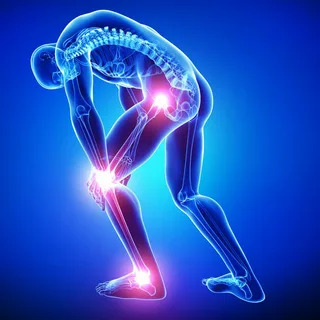Pain Relief for Sports Injuries: Strategies for Recovery and Healing

Sports injuries are a common occurrence among athletes of all levels, ranging from minor strains to more severe fractures or ligament tears. Effective pain relief is crucial not only for managing discomfort but also for facilitating recovery and returning to athletic activities safely. This article explores various approaches to pain relief for sports injuries, including the role of pain relief medication, and provides practical guidance on managing pain while promoting healing.
Understanding sports injuries
Sports injuries can affect various parts of the body, including
- Muscles and Tendons: Strains, sprains, and tears due to overstretching or sudden movements.
- Bone fractures, or stress fractures caused by impact or repetitive stress.
- Joints: Dislocations or injuries to the ligaments (such as ACL tears) that stabilize the joints.
Immediate first aid for sports injuries
Prompt action can help minimize pain and prevent further damage immediately after a sports injury.
1. Rest, Ice, Compression, Elevation (RICE)
- Rest: Avoid using the injured area to prevent aggravating the injury.
- Ice: To reduce swelling and numbness, apply ice packs wrapped in a cloth to the injured area for 15-20 minutes every few hours.
- Compression: Use an elastic bandage to compress the injured area gently, which helps reduce swelling.
- To reduce swelling, elevate the injured limb above the heart level.
Pain Relief Medication for Sports Injuries
1. Nonsteroidal Anti-Inflammatory Drugs (NSAIDs)
- Usage: Medications like ibuprofen or naproxen reduce pain, inflammation, and swelling.
- Considerations: Use NSAIDs cautiously and follow dosage instructions to avoid potential side effects such as stomach irritation or kidney problems.
2. Acetaminophen
- Usage: It helps relieve pain but does not reduce inflammation. This treatment is suitable for individuals who cannot take NSAIDs due to medical conditions.
3. Topical Analgesics
- Use: To relieve numbness, apply creams or gels containing menthol, lidocaine, or capsaicin directly to the skin over the injured area.
Advanced pain management techniques
For more severe sports injuries or persistent pain, healthcare providers may recommend additional pain management strategies:
1. Corticosteroid Injections
- Purpose: Injected directly into the injured area to reduce inflammation and alleviate pain, such as in cases of tendonitis or bursitis.
2. Physical therapy
- Purpose: Exercises and stretches prescribed by a physical therapist to restore strength, flexibility, and function to the injured area.
3. Bracing or Splinting
- Purpose: Provides support and limits movement to allow the injured area to heal properly, such as in case of joint sprains.
4. Platelet-rich Plasma (PRP) Therapy
- Purpose: Uses the patient’s own blood plasma, enriched with platelets, to promote healing of injured tendons, ligaments, muscles, and joints.
Integrative Approaches to Recovery
Combining conventional treatments with complementary therapies can enhance recovery from sports injuries.
1. Massage therapy
- Benefits: Improves circulation, reduces muscle tension, and promotes relaxation, aiding in pain relief and recovery.
2. Chiropractic care
- Benefits: Manipulative techniques to align the spine and musculoskeletal system, alleviate pain, and improve mobility.
3. Acupuncture
- Benefits: Traditional Chinese practice involves inserting thin needles into specific points to stimulate nerve and muscle tissue, promoting pain relief and healing.
Rehabilitation and Return to Sports
Effective rehabilitation after a sports injury involves a gradual progression from rest and pain relief to restoring strength, flexibility, and endurance.
1. Progressive Exercises
- Guidance: Work closely with a physical therapist to perform exercises that target the injured area while avoiding re-injury.
2. Functional Training
- Focus: Incorporate sport-specific movements to simulate activities performed during sports, ensuring readiness for return to play.
3. Psychological support
- Importance: Address fears or anxiety related to re-injury through counseling or sports psychology techniques.
Preventive Strategies for Future Injuries
To lower the risk of sports injuries,
- Warm-Up and Cool-Down: Perform dynamic and static stretches before and after exercise to prepare muscles and prevent strains.
- Proper Equipment: Wear appropriate protective gear, and ensure that equipment (such as footwear) is in good condition.
- Cross-Training: Incorporate a variety of exercises and activities to build overall fitness and reduce repetitive stress on specific muscles and joints.
Conclusion: Optimizing Pain Relief and Recovery
In conclusion, effective pain relief for sports injuries involves a multifaceted approach that combines immediate first aid, pain relief medication, advanced treatments, and rehabilitation strategies. While pain relief medication provides temporary relief, integrating physical therapy, complementary therapies, and psychological support promotes comprehensive recovery and reduces the risk of future injuries.
By prioritizing proper injury management, listening to your body’s signals, and seeking professional guidance when needed, athletes can optimize pain relief, facilitate healing, and safely return to their sport with enhanced resilience and performance. Remember, each sports injury is unique, and individualized care plays a crucial role in achieving optimal outcomes in pain relief and recovery.



